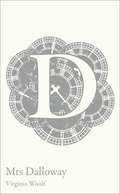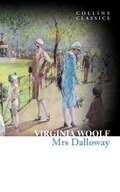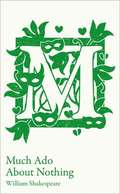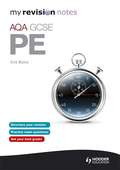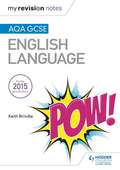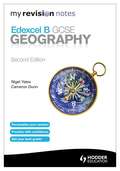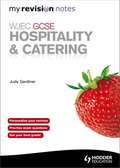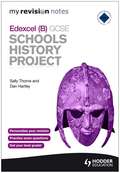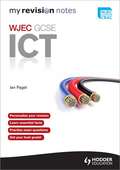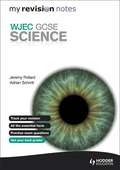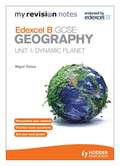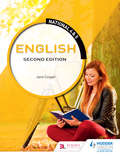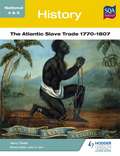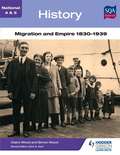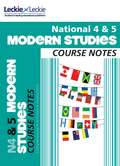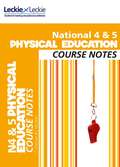- Table View
- List View
Mitosis (UEB Contracted)
by Rnib BookshareThese pages show interphase before mitosis, four stages of mitosis and daughter cells as a product of mitosis. There is a locator dot shown on each page, which will be at the top left of the page when the image is the correct way up. Mitosis is cell replication where a cell divides to produce two identical daughter cells. Late interphase - This page shows a cell immediately before mitosis starts. The cell is a large rounded shape in the centre of the page. Its nucleus fills the bottom of the cell and two centrioles are in the top of the cell. The twenty three pairs of chromosomes in the nucleus have replicated to form a mass of chromatids (double chromosomes) which are tightly coiled. Note the size of the nucleus and the centrioles in relation to the overall size of the cell are greatly enlarged for clarity. Only some of the chromatin is shown, also for clarity. Mitosis - stage one, Prophas - This page shows the start of mitosis. The cell is in the centre of the page. In the top of the cell the centrioles to the left and right have the mitotic spindle growing between them. The nucleus shows three chromatids, the double chromosomes. In reality in humans there would be twenty three chromatids. Mitosis - stage two, Metaphase - This page shows the completed mitotic spindle with a centriole to the left and right. The nuclear envelope has disappeared. The chromatids have attached themselves to the centre of the spindle by their centromeres in the centre of the image. Mitosis - stage three, Anaphase - This page shows the centromeres have separated. The microtubules of the spindle are retracting to the left and right. Each chromatid has split into single sister chromosomes and are migrating to opposite ends of the spindle to the left and right. Mitosis - stage four, Telophase - This page shows the spindle to left and to the right, nearly gone. The chromosomes have collected together and a new nuclear envelope has formed around them. To the top and bottom centre of the cell the plasma membrane is pinching in and starting to divide the cytoplasm. Identical daughter cells The cell has divided to form two genetically identical cells. Each has a nucleus to the left centre of the cell.
Modern World History for OCR (PDF)
by Greg Lacey Nigel KellyDesigned specifically for the Modern World History for OCR specification 1937, this series concentrates on improving students' grades by helping them understand what the key issues are, how their history fits together, and what they need to do with their knowledge to get the best grades in the OCR exam.
Modern World History for OCR specification 1937 (PDF)
by Greg Lacey Nigel KellyDesigned specifically for the Modern World History for OCR specification 1937, this series concentrates on improving students' grades by helping them understand what the key issues are, how their history fits together, and what they need to do with their knowledge to get the best grades in the OCR exam. The book includes clear guidance on how to use historical information effectively, and a time-saving list of significant facts that must be learnt. Answers with examiners' comments are included to build students' confidence and help them achieve their best possible grade. Sample exam questions match the style of the OCR exam, so that students know exactly what to expect in their exam. Contents include: How was British society changed, 1906-18? International relations 1919-c.1939 Germany 1918-45 The USA 1919-41 Russia 1905-41 International relations 1945-c.1989
Momentum before and after collision
This page shows two objects moving towards each other, and the result of their collision. There is a locator dot shown, which will be at the top left of the page when the image is the right way up. This event is depicted in two stages, the first stage at the top of the page, and the second at the bottom. Each diagram has a dashed line image border. Arrows indicate the direction of movement of the objects and labels indicate their speed in metres per second. Labels directly down the page from each object indicate their weight in kilos.Before: two objects moving towards each other. In the diagram at the top, two blocks are shown: the one on the left, with a right-pointing arrow up from it, is twice as wide as the one on the right, which has a left pointing arrow. The blocks are moving along a horizontal surface that runs across the width of the page. After: objects colliding and moving off together. In the bottom diagram, the two blocks have collided with each other at the centre of the page. They are now in contact and moving right, indicated by the arrow up the page, along the horizontal surface that runs across the width of the page.
Momentum before and after collision
This page shows two objects moving towards each other, and the result of their collision. There is a locator dot shown, which will be at the top left of the page when the image is the right way up. This event is depicted in two stages, the first stage at the top of the page, and the second at the bottom. Each diagram has a dashed line image border. Arrows indicate the direction of movement of the objects and labels indicate their speed in metres per second. Labels directly down the page from each object indicate their weight in kilos.Before: two objects moving towards each other. In the diagram at the top, two blocks are shown: the one on the left, with a right-pointing arrow up from it, is twice as wide as the one on the right, which has a left pointing arrow. The blocks are moving along a horizontal surface that runs across the width of the page. After: objects colliding and moving off together. In the bottom diagram, the two blocks have collided with each other at the centre of the page. They are now in contact and moving right, indicated by the arrow up the page, along the horizontal surface that runs across the width of the page.
Momentum before and after collision (Large Print)
by Rnib BookshareThis page shows two objects moving towards each other, and the result of their collision. There is a locator dot shown, which will be at the top left of the page when the image is the right way up. This event is depicted in two stages, the first stage at the top of the page, and the second at the bottom. Each diagram has a dashed line image border. Arrows indicate the direction of movement of the objects and labels indicate their speed in metres per second. Labels directly down the page from each object indicate their weight in kilos.Before: two objects moving towards each other. In the diagram at the top, two blocks are shown: the one on the left, with a right-pointing arrow up from it, is twice as wide as the one on the right, which has a left pointing arrow. The blocks are moving along a horizontal surface that runs across the width of the page. After: objects colliding and moving off together. In the bottom diagram, the two blocks have collided with each other at the centre of the page. They are now in contact and moving right, indicated by the arrow up the page, along the horizontal surface that runs across the width of the page.
Mrs Dalloway (Collins Classroom Classics Ser.)
by Virginia WoolfExam board: Edexcel, OCR, Cambridge Assessment International Education Level & Subject: AS and A Level English Literature First teaching: September 2015 First examination: June 2017, 2020 This edition of Mrs Dalloway provides depth and context for A Level students, with the complete novel in an easy to read format, and a detailed introduction and bespoke glossary written by an experienced A Level teacher with academic expertise in the area. · Affordable high quality complete text of Mrs Dalloway, ideal for AS and A Level Literature · Perfectly pitched introductions provide the depth and demand required by AS and A Level · Explore the contemporary context, Virginia Woolf's writing, the novel's critical reception and subsequent interpretations for a deeper reading of the text · Expand your further reading with a list of key articles and critical and theoretical texts · Improve your understanding of the novel with unfamiliar concepts and culturally-specific terms defined in the glossary
Mrs Dalloway (PDF)
by Virginia WoolfClarissa Dalloway is a woman of high-society - vivacious, hospitable and sociable on the surface, yet underneath troubled and dissatisfied with her life in post-war Britain. This disillusionment is an emotion that bubbles under the surface of all of Woolf's characters in Mrs Dalloway. Centred around one day in June where Clarissa is preparing for and holding a party, her interior monologue mingles with those of the other central characters in a stream of consciousness, entwining, yet never actually overriding the pervading sense of isolation that haunts each person.
Much Ado About Nothing (Collins Classroom Classics Ser.)
by William Shakespeare Peter Alexander Maria Cairney Mike GouldExam board: AQA, Edexcel, OCR, Eduqas, WJEC Level & Subject: GCSE 9-1 English Literature First teaching: September 2015; First examination: June 2017 Exam Board: Cambridge Assessment International Education Level & Subject: International AS & A Level Literature in English First teaching: September 2019; First examination: June 2022 This edition of Much Ado About Nothing is perfect for GCSE-level and A-level students, with the complete play in an accessible format, on-page notes, introduction setting the context, timeline, character and theme indexes.
Mwy o Helynt
by Rebecca RobertsMae Rachel Ross wedi llwyddo i greu bywyd newydd gyda'i mam a'i chwaer, a setlo mewn ysgol newydd. Mae hi'n dechrau dod i adnabod Tony, ei thad go iawn, hefyd. Ond wrth i Jason, y dyn a'i magodd, baratoi i gael ei ryddhau o’r carchar, a oes ganddi le i boeni? Dilyniant i #Helynt, a enillodd wobrau Llyfr y Flwyddyn a Tir na n-Og yn 2021. [Rachel Ross has succeeded in creating a new life for herself and her mother, and has settled into her new school. She has also begun to get acquainted with Tony, her blood father. But should she feel anxious as Jason, the man who raised her, prepares to be released from prison? A sequel to #Helynt, winner of both Book of the Year and Tir na n-Og in 2021.]
My Revision Notes: AQA GCSE PE (PDF)
by Kirk BizleyUnlock your full potential with this revision guide which focuses on the key content and skills you need to kno. With My Revision Notes for AQA GCSE PE, which covers the Short Course, Full Course and Double Award, you can take control of your revision: plan and focus on the areas you need to revise with content summaries and commentary from an expert author; show you fully understand key topics by using specific examples to add depth to your knowledge of PE issues and proce apply PE terms accurately with the help of key words and definitions on all topics; improve your skills to tackle exam questions with self-testing and exam-style questions and answers.
My Revision Notes: AQA GCSE English Language Revision Book (PDF)
by Keith BrindleUnlock your full potential in AQA GCSE English Language with this revision guide that focuses on the key skills needed to succeed and provides expert advice at every stage from experienced examiner and skills trainer Keith Brindle. - Enables you to practise, revise and reinforce the skills required for each question type by working through structured tasks and clear guidance on what the examiner is looking for - Improves exam skills with 'Test Yourself' sections supported by easy-to-understand mark schemes, annotated and graded example responses, and answers to each question online - Demonstrates how to get the best marks through numerous exam tips and lists of typical mistakes to avoid - Helps you focus on areas for improvement and design your own revision programme using the handy revision planner - Enhances vocabulary by explaining the key terms you need to understand and use in the exams - Breaks the content down into a manageable question-by-question structure that works perfectly alongside the AQA GCSE English Language Grades 1-5 and 5-9 Student's Books
My Revision Notes: Edexcel B GCSE Geography (PDF)
by Cameron Dunn Nigel YatesAim for your best grade with this revision guide written specifically for the 2012 linear GCSE Geography for Edexcel B Specification. This guide will help you revise effectively in the way you want to, allowing you to plan and pace your revision according to your learning needs, and to adapt and personalise with your own notes. Written by experienced authors, teachers and examiners, you can be confident that this guide covers the facts and ideas you will be expected to recall and be able to use in the exam. - Understand what is required in the exam with exam tips and guidance - Improve your examination skills with exam practice questions and model answers online - Check your understanding of the content and key terms with engaging activities and explanations of key concepts - Plan and pace your revision with My Revision Planner
My Revision Notes: Hospitality and Catering (PDF)
by Judy GardinerThe only revision guide available for students preparing to take the GCSE in Hospitality amp; Catering. This WJEC endorsed guide takes a topic by topic approach that will highlight the key facts students need to know in order to succeed. Targeted exam questions also provide plenty of opportunity for practice. It offers clear guidance for the preparation of all elements of the qualification. Help students get to grips with difficult and confusing areas with full topic by topic support Enable students to successfully complete coursework tasks with dedicated sections on how to complete Catering controlled assessments and Hospitality events tasks Support in identifying the key facts of the required topics Keep revision engaging and help to consolidate knowledge with targeted questions, revision tips and revision activities.
My Revision Notes: Schools History Project (PDF)
by Dan Hartley Sally ThorneUnlock your full potential with this revision guide which focuses on the key content and skills you need to know for Edexcel (B) GCSE Schools History Project. Written by experienced teachers, this series closely combines the content of Edexcel (B) GCSE Schools History Project with revision activities and advice on exam technique. Each section has a model answer with exam tips for you to analyse and better understand what is required in the exam. Makes revision manageable by condensing topics into easy-to-revise chunks Encourages active revision by closely combining content with a variety of different activities Helps improve exam technique through tailor-made activities and plenty of guidance on how to answer questions Includes access to quick quizzes at www.hodderplus.co.uk/myrevisionnotes
My Revision Notes: WJEC ICT for GCSE (PDF)
by Ian PagetUnlock your full potential with this revision guide which focuses on the key content and skills you need to know. With My Revision Notes for WJEC ICT for GCSE you can: - Take control of your revision: plan and focus on the areas you need to revise with content summaries and commentary from author Ian Paget - Show you fully understand key topics by using specific examples of ICT in today's world to add depth to your knowledge of ICT issues and processes - Apply ICT terms accurately with the help of definitions and key words on all topics - Improve your skills to tackle specific exam questions with self-testing and exam-style questions and answers - Get exam ready with last-minute quick quizzes at www. hodderplus. co. uk/myrevisionnotes
My Revision Notes: WJEC GCSE Science (PDF)
by Adrian Schmit Jeremy PollardUnlock your full potential with these revision guides which focus on the key content and skills you need to know. With My Revision Notes for WJEC GCSE Science you can: Take control of your revision: plan and focus on the areas you need to revise with content summaries and commentary Show you fully understand key topics by using specific case studies to add depth to your knowledge of business issues and processes Apply Psychology terms accurately with the help of definitions and key words on all topics. nbsp;
My Revision Notes: Dynamic Planet (PDF)
by Nigel YatesUnlock your full potential with this revision guide which focuses on the key content and skills you need to know for Edexcel B GCSE Geography Unit 1
National 4 & 5 Computing Science (N4-5) (PDF)
by John WalshThis comprehensive textbook provides full coverage of the Computing Science courses offered by the Scottish Qualifications Authority at both National 4 and 5 levels. The book is divided into two core units of the syllabus, Software Design and Development and Information Systems Design and Development, and is attractively designed in full colour throughout. - The first comprehensive book for National 4 and 5 Computing Science - Written by the bestselling author of 'Standard Grade Computing Studies'
National 4 & 5 English Second Edition (PDF)
by Jane CooperThis new edition of the National 4 & 5 English textbook is fully up to date for National 4 and 5 courses, including the latest updates to National 5. It recognises the removal of Purpose and Audience from both courses, and includes new material for Reading for Understanding, Analysis, and Evaluation at National 5, and for the National 5 Spoken Language Assessment.Throughout the book, the necessary skills or areas of knowledge are introduced gradually, tested with brief activities, demonstrated again, and then reinforced with end-of-chapter activities and questions that mirror SQA examination papers.Ensure your students are prepared for every aspect of their assessment with fully comprehensive coverage of the new syllabus requirements:- updated to support the new course specification and address all skills covered in the SQA examinations- reflects changes in the set text list- provides thorough exam preparation, with Practice Exercises, and associated answers and mark schemes- includes a new focused revision tips section- written by a highly experienced and respected author- provides an engaging and practical pathway through the syllabus- organised to make it easy to plan, manage and monitor student progress.
National 4 & 5 Graphic Communication Course Notes (PDF)
by S Hunter Peter LintonThe National 4 amp; 5 Graphic Communication Course Notes help map your route through the CfE programme and provide comprehensive and authoritative guidance.
National 4 & 5 History: The Atlantic Slave Trade 1770-1807 (PDF)
by John Kerr Jerry TealeProvides comprehensive coverage of this topic option for the new National 4 amp; 5 syllabus and is endorsed by SQA. The National 4 amp; 5 History series from Hodder Gibson offers six individual textbooks aimed at the most popular options for the new SQA syllabus, to be examined from 2014 onwards.
National 4 & 5 History: Migration and Empire 1830-1939 (PDF)
by Simon Wood Claire WoodProvides comprehensive coverage of this topic option for the new National 4 amp; 5 syllabus and is endorsed by SQA. Contents include: Immigration to Scotland, 1830s-1939 Experience of Immigrants to Scotland Experience of Scots abroad nbsp; nbsp;
National 4/5 Modern Studies Course Notes (PDF)
by Jenny Reynolds Jenny Gilruth Elizabeth ElliotThe National 4 and 5 Modern Studies Course Notes help map your route through the CfE programme and provide comprehensive and authoritative guidance. Course Notes give a practical, supportive approach to help deliver the new curriculum and offer an appropriate blend of sound teaching and learning with exam and assessment guidance.
National 4/5 Physical Education Course Notes (PDF)
by Caroline Duncan Linda McleanThe National 4 amp; 5 Physical Education Course Notes help map your route through the CfE programme and provide comprehensive and authoritative guidance. Course Notes give a practical, supportive approach to help deliver the new curriculum and offer an appropriate blend of sound teaching and learning with exam and assessment guidance.


